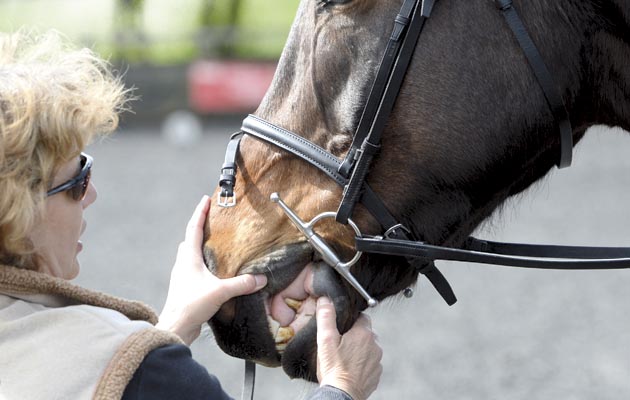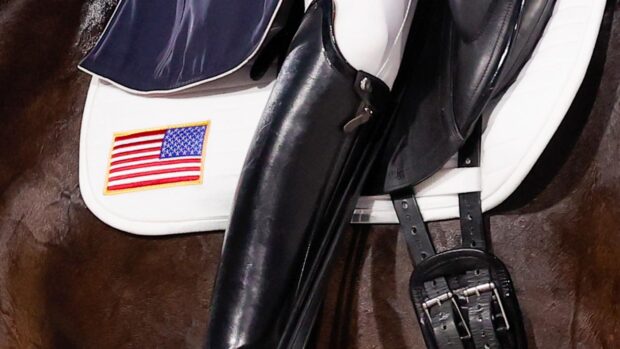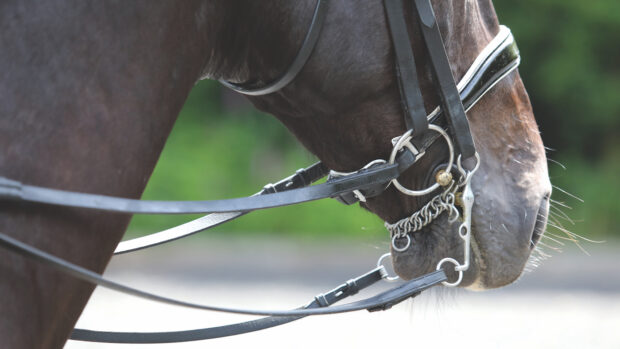Whether you are buying your horse a bit for the first time, or trying a new bit on your horse, it’s vital to know both how to measure your horse’s mouth and the bit itself. A horse will be uncomfortable whether a bit is too tight or too big, which can destroy the trust between horse and rider. If the bit is too narrow, it will squeeze the horse’s lips and cheeks, causing discomfort and trauma. However, if it is too wide it can move adversely from side to side, which can cause bruising and trauma inside the mouth as it is not sitting as it was designed to be.
Lorinery expert and BETA field officer Tricia Nassau-Williams says that “fitting bits too big is perhaps the most common fault I see”.
“People think if the bit is too big it will be kinder as there is more room, but nothing could be further from the truth,” she explains. “The bit has to be a true fit for the individual horse. It can be frustrating when I recommend a bit and the rider borrows one that is much too big. It’s not just about finding the right design, but also the right size.
“To know if the bit is fitting correctly, it first needs to be at the correct height as this will affect the width in the V-shaped jaw. It should be neatly fitting into the corners of the mouth, parallel to the second two grooves on the roof of the inside of his mouth. Then stand in front and with a bit of rein contact, look to see how much clearance there is. As a very general guide, you want to have an index finger’s clearance.”
For loose rings, the horse’s lips should clear the bit ring holes by 1/8 inch on each side, to prevent pinching. If you can see half an inch or more, the bit is too big for this horse.
Some manufacturers, such as Neue Schule, provide a service whereby you can send them a picture of the bit in the mouth and they’ll advise on size.
How to measure a horse’s mouth
There are various bit-sizer tools on the market to help you determine the correct size bit. This is an inexpensive plastic measuring device that slides into the horse’s mouth and shows you what size should fit – always go up a size if it falls between two. Some bit gauges also have a nylon strap so you can slip it over the horse’s head giving a more accurate measurement according to bit height. Check out if you have one of these on your yard, as they are quite hard to come by in online tack shops. Various manufacturers supply their own bit gauges to relate to their own bits.
If you don’t have a bit sizer to hand and your horse will allow it, you can use a piece of string and a marker, marking the sides of the mouth and measuring the distance between each mark. Bits in the UK are usually measured in inches.
However, Tricia cautions that as bit designs and thicknesses vary, that affects how they fit inside the horse’s mouth, so the measurement may not tally precisely with the right bit size.
“It’s no good saying, ‘my horse is a 5.5in’, because some bits have more curve and fit differently, so you need to be open-minded to acknowledge what is in front of you,” she says.
Measuring the mouthpiece
So you know what size bit your horse should take, now to check the bit’s size. If you buy it new from a shop, this should be straightforward as it will be labelled. However, many of us have a box of bits in our tack room ready for whichever horse needs something different. It’s bad practice hygiene-wise to share bits around the yard, so make sure you have sterilised it first. You can put them in the dishwasher or soak in a home-made solution of water, vinegar, and baking soda, scrub and rinse.
To measure your bit, first find a ruler (better than a floppy tape measure) and lay the bit flat on a hard surface on top of the ruler. The length of the bit is the distance from the inside of one bit ring to the other. For a loose-ring bit, measure from the inside of the hole for the ring. UK bits are measured in inches, and will be in the region of the 5in mark. You cannot go by the old adage for 4.5in for a pony, 5in for a horse, 5.5in for a draft horse – mouth sizes and shapes vary far too much for that.
You will also want to know the thickness of the mouthpiece, as this can vary from around 12mm to as much as 23mm.
“The easiest way to measure the thickness is with a digital caliper gauge,” suggests Tricia. “If not, put the bit on a ruler on a hard surface and measure in millimetres from above to get the diameter. If the bit is tapered, measure the widest bit next to the cheek. Twelve to 14mm is very fine, 16mm is the most common, while 20mm is very generous – more common on a mullen mouth or a rubber mouthpiece.”
You may also need to measure the ring size. This is taken across the diameter from the inside of the ring to inside. A normal loose-ring snaffle would be between 60–70mm; a bradoon around 50–55mm, while 45mm is very small.
Curb chains are simply measured from one end to the other, and tend to come in sizes small, medium and large.
Finding the right size is not as simple as picking a bit off a peg. As well as being diligent about checking the size, you also need to be adept at switching from imperial to metric to general sizing. But for your horse’s sake, it’s worth taking a bit of time to get right.
You may also want to read…

9 bits designed with young horses in mind

Choosing the right bit for your horse

5 top tips to help you choose the perfect bit for your horse

Eggbutt snaffle or loose ring: what’s the difference?
Snaffles are the most widely used bits on the market, but what is the difference between a loose ring and

Subscribe to Horse & Hound magazine today – and enjoy unlimited website access all year round
Horse & Hound magazine, out every Thursday, is packed with all the latest news and reports, as well as interviews, specials, nostalgia, vet and training advice. Find how you can enjoy the magazine delivered to your door every week, plus options to upgrade your subscription to access our online service that brings you breaking news and reports as well as other benefits.





